The Commonwealth Bank Household Spending Intentions Series launched today shows there is a turnaround in home buying intentions currently underway and the risks to economic activity and consumer spending are starting to recede. But weakness in retail and motor vehicle spending intentions still indicate a high level of household caution when it comes to expenditure more generally. The new Household Spending Intentions Series provides a unique view on Australian household spending through analysis of actual customer behaviour from CBA’s transactions data, along with household spending intentions from Google Trends search data. This combination should add to insights on prospective household spending trends in the Australian economy.
CBA Chief Economist Michael Blythe said: “The big question right now with interest rate cuts in place and tax cuts coming is whether policy makers have done enough to keep the Australian economic story on an even keel. The overall message about household spending intentions has changed over the first half of 2019. The weakness evident since mid-2018 spilt over into the early part of 2019, but a more diverse picture is now evident.”
“Weakness persists in the dominant retail and motor vehicle sectors. But other sectors appear to be bottoming out – including travel and entertainment, or picking up – including health and education. The turn in home buying intentions is particularly noticeable in recent months,” Mr Blythe added.
With the launch of the Household Spending Intentions Series, CBA is taking an innovative approach to obtaining an early indication of spending trends across seven key household sectors in Australia. Apart from home buying, the series covers around 55 per cent of Australia’s total consumer spend across; retail, travel, education, entertainment, motor vehicles, and health & fitness.
“We will be publishing this new data on a monthly basis so we can help Australians stay ahead of emerging economic trends. Households are the dominant part of the economy and drive much of its activity and volatility – anything that gives an early warning sign on how the consumer is behaving is very useful,” Mr Blythe said.
To find out more about the Household Spending Intentions Series, as well as the results as at July 2019, visit www.commbank.com.au/spendingintentions.
Household Spending Intentions – July 2019 results
Home Buying
|
|
|
 |
| Retail | |
|
 |
| Motor Vehicles | |
|
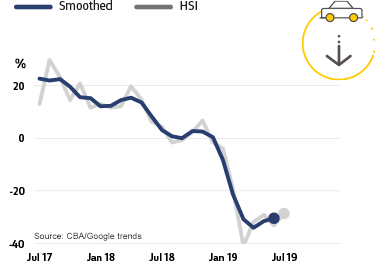 |
| Entertainment | |
|
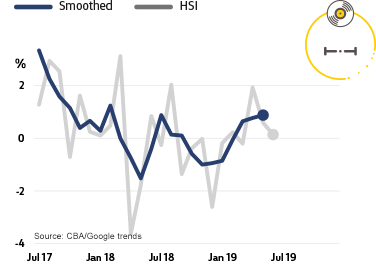 |
| Travel | |
|
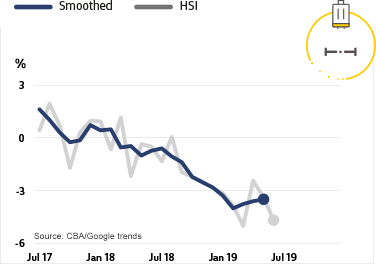 |
| Education | |
|
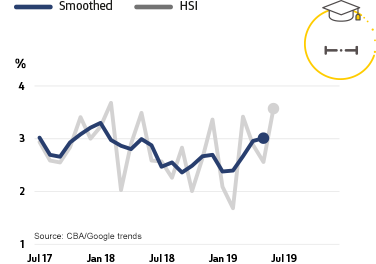 |
| Health & Fitness | |
|
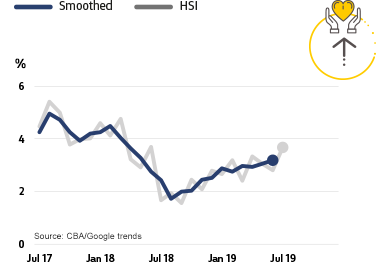 |
Notes for Editors:
About the approach
The new approach focuses on Australian households and their spending intentions. Employing near real-time spending readings from CBA’s household transactions data and combining them with relevant search information from Google Trends was used to map the data results on consumer spending. Media assets available include infographic, video and graphs.
About Google Trends
Google Trends is a publically available service that enables people to explore search trends around the world. These searches provide insights into what consumers are doing/researching on the Internet and what their spending intentions are.
Disclaimer
This ‘CBA-Google Household Intentions’ series provides general market-related information, and is not intended to be an investment research report. The ‘CBA-Google Household Intentions’ series has been prepared without taking into account your objectives, financial situation (including the capacity to bear loss), knowledge, experience or needs. Before acting on the information in the ‘CBA-Google Household Intentions’ series, you should consider the appropriateness and, if necessary seek appropriate professional or financial advice, including tax and legal advice. The data used in the ‘CBA-Google Household Intentions’ series is a combination of the CBA Data and publically available Google Trends™ data. All customer data used or represented in this report is anonymous and aggregated before analysis and is used and disclosed in accordance with the Commonwealth Bank Group’s Privacy Policy Statement. Google Trends is a trademark of Google LLC.
Commonwealth Bank of Australia ABN 48 123 123 124 AFSL 234945.



